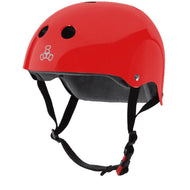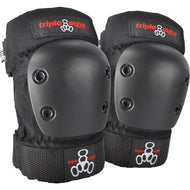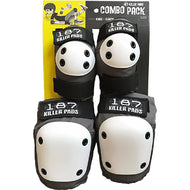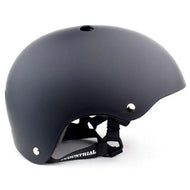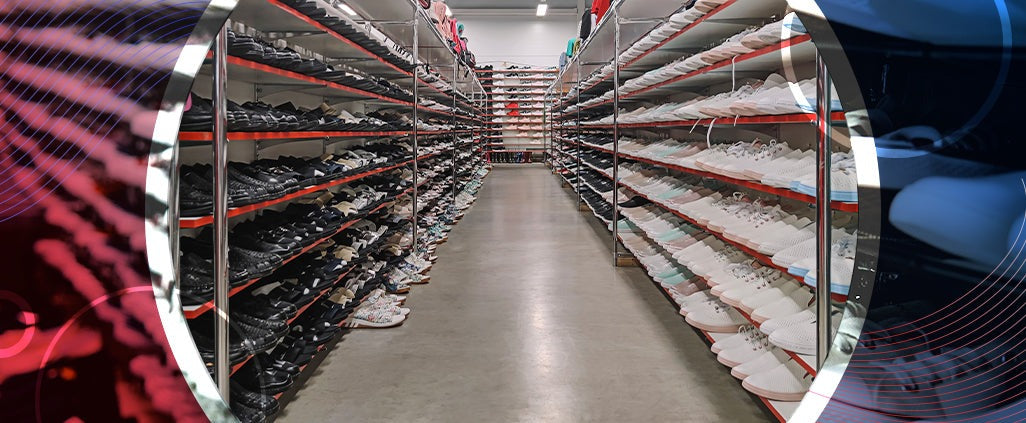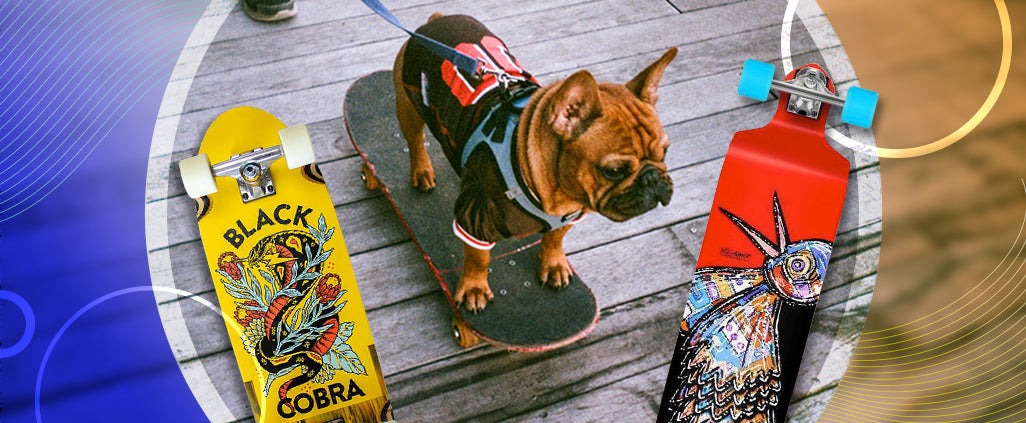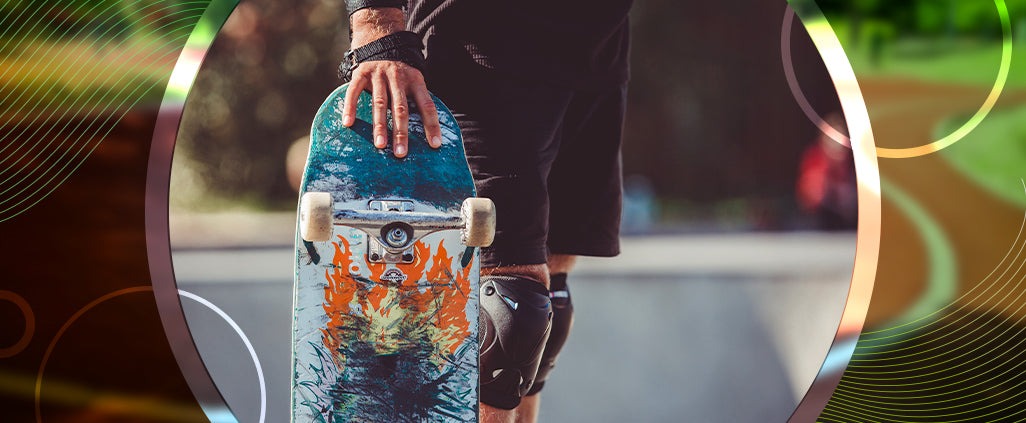
Guide for Skateboard and Longboard protections
Types of protections for Skateboard and Longboard:
1. Helmet
No one will argue that the helmet is the most important skateboarding or sliding protection there is. Here we are not talking about avoiding a scratch or an injury, but about saving a life. Hence its importance. But not all helmets are the same. There are approved and non-approved helmets. With more or less protection and ventilation. Some have sophisticated fastening and adjustment systems and others are more basic. All these points will mark the final price of the helmet.
Let's see the main types of helmets for skateboards and Longboard:
- Freestyle, skate and longboard helmets:
Freestyle helmets are usually more rounded and less ventilated than helmets for modalities such as fitness. The outer plastic is also usually harder. They also tend to have better protection for the back of the skull.
With this type of helmets, you can practice skateboarding, and longboarding, in different modalities such as freeride or freestyle, since they offer very complete protection. You can even use them for cycling, but on hot days you will notice the lack of ventilation.

- Helmets for downhill skating:
Downhill helmets are full-face helmets similar to motorcycle helmets, but lighter and with less padding. Being a practice in which very high speeds are reached, a helmet with very good protection is required.

- Children's helmets:
In a very general way, we could say that children's skating helmets are helmets like those described above but in smaller sizes. There are those with a more ventilated design or more closed and protected, such as freestyle or downhill helmets. Of course, in many cases, the graphic design of the helmet has a clearly childish approach with drawings of animals, superheroes or other types of motifs.

2. Knee pads
Knee pads are also very important to avoid unnecessary injuries. They are usually composed of a foam part that cushions the blow and a harder plastic part or plate on the outside that distributes the impact over its entire surface. There are several types of skateboard or longboard knee pads:
- Skateboard, longboard or freestyle knee pads.
The freestyle or ramp knee pads are very padded, large and resistant. Their main advantage is protection. Their main disadvantages are poor ventilation, weight and large size.

- Knee pads for speed skating
Knee pads are not normally used in speed skating, since the goal is to go as light and free as possible. However, specific knee pads for speed skating are increasingly being used by beginners, children and training skaters. These knee pads are like an elastic mesh to which Kevlar reinforcements have been added in the most sensitive areas. They do not protect from the blow, but they do protect from the scrape that is, after all, the most typical injury when a fall occurs in speed skating.

3. Elbow pads
In principle, elbow pads have similar designs to all the above types of knee pads. However, their design is more compact since the arm is thinner than the leg.
The elbow pad is a protection that is not often given much attention but is of vital importance. In a backward fall, it is easy to fall on your elbows, for example.

4. Gloves and wrist guards
Although it may not seem like it, gloves and wrist guards are the most important protection. The reason is that we usually instinctively support our hands first in the event of a fall. If the fall is at low speed, we can injure our wrists. If the fall is at a higher speed, we may scrape our palms, which is not very pleasant.
There are several types of hand protection. Let's see some types:
- Wrist protectors or wrist guards:
This is the classic protection in which plastic pieces keep the wrist fixed while protecting the palm. It is important to look for a model that fits well to our hands and that the plastic has certain flexibility since we could injure ourselves more.
- Longboard gloves:
For cruising or riding in the city quietly with the Longboard, we can use normal gloves or protective wristbands. However, in Freeride or Downhill, many tricks are based on resting the hand on the ground. For this purpose, gloves are used with plates on the palm of the glove (pucks) that allow us to slide without injuring ourselves.

- Gloves for speed skating:
As we commented before with knee pads, in speed skating, not many protections are usually used, but apart from the helmet, gloves are tremendously necessary. Very light and breathable gloves with or without palm protection are usually used. 
5. Shin guards
Shin guards are widely used by freestylers, for example. Their function is to protect the shins from blows since, in this type of modalities, when performing tricks in park or rails, it is very common to hit this part of the body. They are usually worn under the pants without being noticed.

6. Protective pants or butts
It is not one of the most used protections, but it is highly recommended, both for beginners and advanced skaters. Depending on the model, it can have protection and bulge, usually worn under the pants. Protective pants protect the sides of the hip and coccyx in case of a fall.

7. Back protectors or turtles
This protection is focused almost exclusively on downhill skaters. Its function is to avoid injuries or blows to the back. There are with reinforcement and ventilation. They are usually placed under the clothing, either a jacket or a leather suit.

8. Ankle protectors
Although they are not designed to prevent impacts, they do help enormously to avoid chafing or pain in the ankles. Basically, they are neoprene sleeves of various thicknesses that are worn like a sock, thus protecting areas such as the malleoli or other points of the foot that tend to suffer with certain boards.

9. Mouthpieces
In sports such as Hockey or Roller derby, mouthguards are often used to protect the teeth. Made of silicone, they are available in one piece or with holes. The latter facilitates the expulsion of saliva and therefore offers more comfort.

10. Cushioned insoles
Some people sometimes do not feel comfortable with the sole of their foot on certain boards. A good solution is to change the standard insoles for more ergonomic and cushioned ones.

It is important to have correct maintenance of the protectors that we use for sports such as skateboarding or longboarding. In principle, the protections only need to be washed, as they are in contact with our skin while we are doing physical activity, they become impregnated with sweat. Apart from the odor, sweat contains salts that can damage the textile materials of the protection. The best way to eliminate odors and salts is to wash the protections in soapy water. They can even be put in the washing machine. However, it is very important to rinse them well so that no trace of soap remains, and never use fabric softener as odors will be more easily impregnated.
In the case of protections with hard plastic parts, if we are going to put them in the washing machine, they must be wrapped in clothes that we are also going to wash to prevent them from hitting the washing machine drum. Another recommendation is not to leave the Velcro strips loose, as they will stick to the other clothes in the washing machine. That is to say, let's join the strips to the Velcro receiver.
The world of longboard and skateboard is huge, and there are thousands of items that can serve as a tool, either to start, to improve your tricks, and speeds, just enjoy it in a safer way, or to make you feel more comfortable. Here at Longboards USA, you can find much more information about these topics, and even about specific brands. We have the best brands in the world, something incredible!

